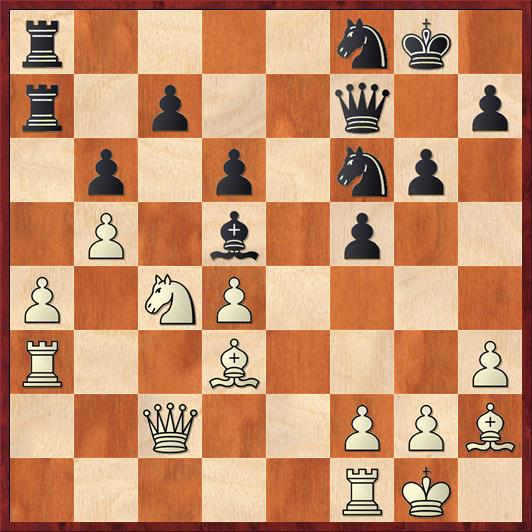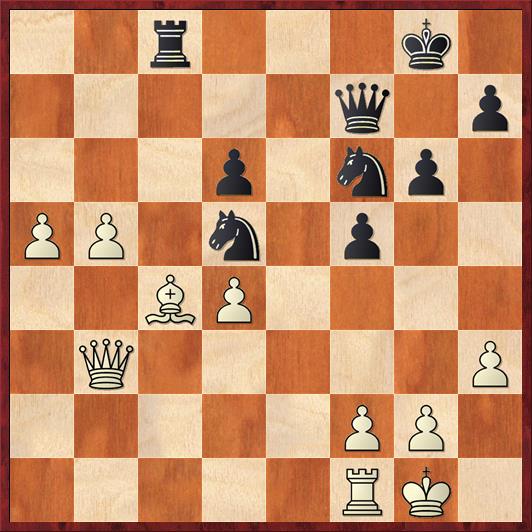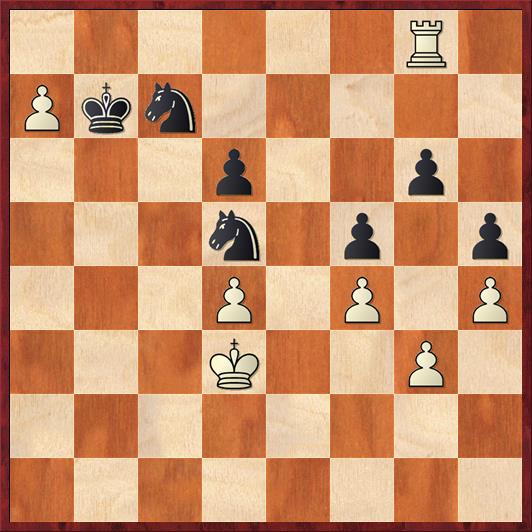The San Francisco Bay area has been an unbelievable incubator for chess talent since the year 2000 or so, thanks to the hard work by organizers such as Judit Sztaray of Bay Area Chess and teachers like Michael Aigner. One player after another has progressed through the ranks from class players all the way up to Grandmaster, although they often have to leave home for the last step of the journey. I have had the chance to watch and compete against players like Vinay Bhat, Sam Shankland, Daniel Naroditsky, and Samuel Sevian when they were just kids, and now all of them have the magic letters “GM” attached to their names.
Our latest addition to the list is Steven Zierk, who earned his third and final Grandmaster norm last week at the GM/IM Norm Invitational event in North Carolina. Although he got off to a slow-ish start, with draws in his first two games, he dominated the middle rounds and scored 6½ out of 9 to win the event outright.
For a top player, Zierk has had quite an unusual chess career. He was at the top of his age group in California at age 9, but then he quit for five years to focus on tae kwon do and other things. Then, around, age 14, he returned to chess with “only” an expert rating.
Normally you would think that a 14-year-old expert is a pretty good player, but not really someone you would expect to become a Grandmaster someday. However, Steven very quickly made up for lost time. Just a couple years later I watched him take down a 2700 player (Loek van Wely) in Reno, and then in 2010 he won the world under-18 championship. I believe that title carried with it an automatic International Master title.
When I wrote about his visit to the Aptos Library in 2011, he was trying to decide where to go to college, and whether to prioritize academics (Ivy League) or chess (University of Texas at Dallas). I’m not surprised that he chose academics. I think that he has never been too impressed by his chess success, as shown by the fact that he was willing to walk away from the game for four years as a kid.
What’s next for a well-rounded person who inconveniently has a world-class talent for a game that usually requires single-minded devotion to succeed at the top level? We’ll see. For now, let’s celebrate our newest grandmaster.
Here is one of Steven’s games from the GM/IM Norm Invitational, against Grandmaster Gergely Antal. I think it is an excellent example of Steven’s fearless style. In an earlier post I wrote about one of his positions: “I would have been afraid of missing something. But Steven is never afraid. Would a fish be afraid of water?”
Steven Zierk – Gergely Antal
Position after 21. … Nf8. White to move.
FEN: r4nk1/r1p2q1p/1p1p1np1/1P1b1p2/P1NP4/R2B3P/2Q2PPB/5RK1 w – – 0 22
Zierk, playing White, did not in my opinion get very much out of the opening. Black had a number of good safe moves at his disposal, such as 21. … Kg7 or 21. … Be4 (the computer’s choice). With his last move, however, he played somewhat provocatively. White now has the opportunity to sacrifice a piece and get two connected passed pawns on the queenside.
Why did Antal allow this dangerous sac? I think that the reason is quite simple: He didn’t believe it. Ordinarily, two connected passed pawns — especially in the middle game — are just not enough compensation for a piece. But I think that he might also have been playing a psychological game — hoping that the sac might look just good enough for Zierk to be tempted. There’s a fuzzy boundary in chess between daring and foolish, and this position is one where even strong players would disagree.
22. Bxd6! …
A decision based on concrete analysis. Yes, in general two pawns aren’t enough for a piece. But here there are several specific factors that make this position different. (1) The d6 pawn is kind of weak, and if it falls then White would have full compensation for the material. (2) White will be able to trade off the bishop on d5, currently Black’s best piece. This will leave Black with rooks and knights, which are less adept at stopping a pawn phalanx than bishops. (3) Not only that, Black will face the real possibility of a catastrophe along the a2-g8 diagonal: a knight pinned against both his queen and his king. This is one reason why the loss of the white-squared bishop could be critically important.
By the way, even the computers disagree on this position. My laptop, with Rybka, says it’s equal (+0.21 for White). The online analysis, which I think is by Stockfish, evaluates it at +0.77 for White. Even if Rybka is right and the position is just equal, it’s clearly way better for Zierk to be the one with the initiative and the dangerous threats, while Black is the one who has to thread the needle with his defense. Antal very quickly shows he’s not up to the task.
22. … cd 23. Nxb6 Rc7 24. Rc3 …
I like this move! The rook, formerly misplaced on a3, is perfectly posted to stop Black’s attempt at counterplay.
24. … Rxc3 25. Qxc3 Rb8?
This is clearly the worst of the four plausible squares: b8, d8, e8, and a7. Antal obviously didn’t see the difference — but Zierk alertly figures out why this one is worse. All of the computers now give White a big edge.
Position after 25. … Rb8. White to move.
FEN: 1r3nk1/5q1p/1N1p1np1/1P1b1p2/P2P4/2QB3P/5PP1/5RK1 w – – 0 26
The first move is obvious.
26. Nxd5 Nxd5 27. Qc6! …
A powerful and subtle move. First, it’s important to realize that 27. … Nb4 would be met by 28. Qxd6 attacking the loose rook on b8. That’s why b8 was the most unfortunate square for the rook; if it had been on d8 or e8 this wouldn’t have happened.
Still, Black does have an obvious way to defend the d-pawn, gaining a tempo with an attack on White’s queen. But Zierk realizes that this tempo gain actually leads to at least two tempi lost for Black, because the rook on b6 will be an easy target for White’s phalanx of pawns and it will have to retreat again. Rooks are terrible at defending against a pawn phalanx, especially when they are in front of the pawns. The knights would be better, but they are going to be paralyzed by White’s threats along the a2-g8 diagonal.
27. … Rb6 28. Qc1 …
Retreating but also preparing to attack the d6 pawn from a new direction.
28. … Nd7 29. a5 Rb8 30. Bc4 N7f6 31. Qa3 Rc8 32. Qb3! …
Position after 32. Qb3. Black to move.
FEN: 2r3k1/5q1p/3p1np1/PP1n1p2/2BP4/1Q5P/5PP1/5RK1 b – – 0 32
Success! I believe that this is the schematic position that Zierk envisioned ten moves ago, when he sacrificed his piece. He perhaps didn’t anticipate the exact sequence of moves, but I think he realized that this was the type of position to aim for. In particular, notice that two White pieces control three Black pieces. So, in effect, White is not down a piece for two pawns, he is up two pawns.
Everybody above class D understands pins, but I think that setups like this one, where x White pieces completely control y Black pieces, and x < y, are probably not as widely appreciated. When I think back to the AlphaZero versus Stockfish games last year, such reasoning was behind some of the unbelievable piece sacrifices that AlphaZero came up with.
At this point the game should basically be over, but there were a few other interesting wrinkles to come, so let’s keep going.
32. … Kg7 33. a6 Rb8 34. b6 Rxb6
Black has to give up material to stop the pawns.
35. Qxb6 Nxb6 36. Bxf7 Kxf7 37. Rc1 Ke7 38. Rc7+ Nfd7 39. a7 Na8 40. Rc8 Ndb6 41. Rh8 …
Position after 41. Rh8. Black to move.
FEN: n6R/P3k2p/1n1p2p1/5p2/3P4/7P/5PP1/6K1 b – – 0 41
Another interesting “Horatio at the bridge” situation has arisen. White was not able to queen his a-pawn, but that single pawn is so powerful, due to the threat of promotion, that it essentially immobilizes two Black knights. That leaves White’s rook free to do damage on the other side of the board.
White is still in complete control here, but over the next few moves he nearly lets his advantage get away. I think that Steven relaxed a little bit, thinking the game was already won, and tried to win with moves that minimized risk.
41. … h5 42. f4 Ke6 43. Kf2 Kd5 44. Ke3?! …
This seems like such an obvious move, but White’s advantage according to the computers takes a hefty hit here — it drops from 3 pawns to 2 pawns. They say that White should simply trash Black’s kingside with 44. Rg8, and White’s h-pawn will become a threat long before Black’s d-pawn does.
By comparison, 44. Ke3 is a very natural human move and not bad, but it lacks the machine’s ruthlessness.
44. … Nc7 45. Kd3 …
Ditto the previous comment. White is playing on the wrong side of the board.
45. … Kc6 46. h4 Kb7 47. Rg8 Nbd5 48. g3 …
Position after 48. g3. Black to move.
FEN: 6R1/Pkn5/3p2p1/3n1p1p/3P1P1P/3K2P1/8/8 b – – 0 48
Here, believe it or not, Black misses a draw! Well, at least if you believe the computer. And it depends on which one you believe. Stockfish says that the position is dead equal (+0.09 for White). Rybka is a little bit more bullish on White, but when you play the position out a few moves, White has one of those incredible shrinking advantages that eventually lands in +0.4 territory — not really enough to win.
First, there’s no question what Black must do here: get rid of Public Enemy Number 1, the a-pawn. After 48. … Kxa7 49. Rxg6 Ne8 50. Rg5 Antal must have felt that Black’s position was hopeless, because he can’t defend both the f- and h-pawns. But look a little bit deeper! After 50. … Nef6 51. Rxf5 Kb6 White’s rook is in an incredibly awkward position, where it will take several moves to extricate it. And after 52. Rg5 (maybe 52. g4!? should be tried) Kb5 Black is going to argue that he has a fortress — White has no way to make progress.
Well, White does have a way to break the fortress, which is to play g4 at some point, sacrificing a pawn to free the h-pawn. However, notice how active Black’s knights are and how weak all of White’s pawns are. In the twenty-moves-deep variations I looked at on the computer, Black is typically able to sacrifice one of the knights for the h-pawn and then round up one or both of White’s other pawns, reaching an endgame that is hard or impossible for White to win.
Anyway, it’s clear that Zierk erred by waiting too long to “trash Black’s kingside.” But in the above position, Antal made a far more serious mistake: he forgot about Public Enemy Number One.
48. … Ne7?? 49. a8Q+! Nxa8 50. Rg7 Black resigns
These two knights were such tight buddies throughout the game, constantly protecting each other — until the very last moment, when one of them wandered off to e7 and the other wandered off to a8.
It’s true that Steven had a little bit of help in this game, in the form of timely blunders by his opponent. However, those blunders didn’t happen in a vacuum: they happened because Steven was not afraid to enter complicated positions and pose difficult problems to his opponent. In the end it was a well-deserved victory even if Black might have had computer-level drawing chances at the end.








{ 1 comment… read it below or add one }
Steven quit chess in Spring 2002 at age 8. He had just tied for first in U1400 at the 2001 World Open and was rated around 1500. I believe he was once ranked #2 in the country for his age, just behind a certain Marc Tyler Arnold (now also a GM). To be fair, he never completely quit chess as he attended NM Jon Frankle’s chess group and played the occasional tournament.
His return to chess began in December 2006 at age 13 with a rating of 1527 He gained over 200 rating points in his first two events of 2007, defeating three opponents over 1900 including NM Albert Rich. I petitioned the director of the People’s Tournament in Berkeley to allow him to play up two sections, and he promptly took clear first in the A section. By March 2007, his rating reached 1900.
To complete the story, Steven achieved the NM title in July 2008. Barely two years later, in October 2010, he won the World Youth u18 in Greece, thereby earning the automatic IM title (incidentally the tournament also was his third IM norm). Looking back at the field, I see Steven played no fewer than 6 current Grandmasters en route to the gold medal!